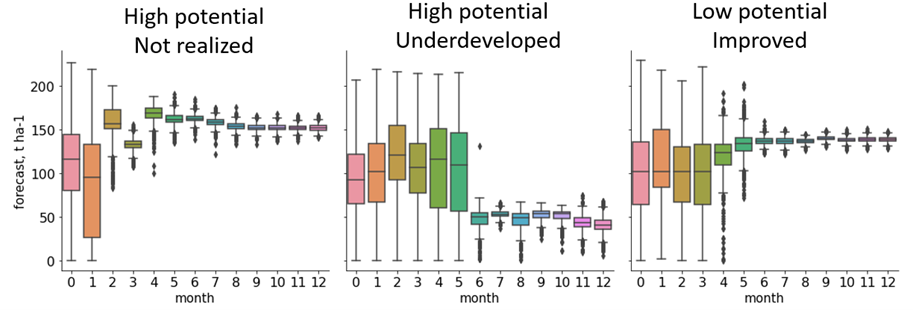A Demonstration Project using space technology to develop services to reduce costs and optimise the production of sugarcane in South America has been successfully completed in Colombia. With the support of the European Space Agency (ESA)’s Business Applications and Space Solutions (BASS) programme, Netherlands-based eLEAF partnered with Colombia-based AgroAP to launch CostCutting4Sugarcane, an innovative solution integrating SatEO optical imagery, radar-based data and agronomic models to provide an operational service for sugarcane producers.
Sugarcane is the largest global food commodity in terms of production volume and is cultivated on more than 20 million ha in tropical and sub tropical areas around the world (FAO-STATS, 2023). Although the crop is associated with soil degradation and deforestation, the vast global market for sugarcane derivatives (besides sugar, increasingly for ethanol and bioenergy) keeps the industry booming. With the reduction of agricultural inputs and environmental resources forming a key element of the European Green Deal, the impetus to help the sector to produce sugarcane more efficiently, sustainably and in a more economically viable manner has never been greater. This is what CostCutting4Sugarcane is all about, and the industry has embraced it.
One of the main challenges for the sector is the high cost of sugarcane production which is characterised by high agricultural inputs and high costs in harvest logistics which together account for up to 60% of total production costs. With regard to fertiliser usage, this is mainly due to a lack of accurate information throughout the growing season to enable farmers to localise specific nutrient requirements. Farmers have to judge fertiliser requirements using traditional rules of thumb, which generally results in overestimations. Similarly, in the case of harvest logistics, the lack of in-season information on expected yield, results in large fluctuations in the amount of sugarcane supplied to the mill at the end of the growing cycle. This in turn leads to under-utilisation of mill capacity at times of low supply. Conversely, at times of high supply, the mill has to delay the crushing of sugarcane or even discard it entirely, resulting in suboptimal output in terms of both volume and quality.
The main underlying reason for this lack of accurate information is the substantial cloud cover in the country that limits the use of optical-only information. The CostCutting4Sugarcane project therefore took a multi-faceted approach, combining optical and radar imagery to provide continuous crop production information throughout the growing season.
To optimise harvest logistics, this new approach was used to map crop performance to long-term average weather condition and integrate a sugarcane-specific yield model. This resulted in accurate yield predictions as early as 4-5 months into the growing season, a huge improvement on the currently common 8-9 month yield predictions, when it is already too late to implement mitigation measures to optimise production and/or to shift mill operation planning. As a result, both farmers and mill owners were able to operate more efficiently with improved cashflow and higher profitability.

By combining this same new approach with soil maps, the project was able to determine the total amount of nitrogen needed to be applied to the field in the upcoming growing cycle. In-field variations were taken into account, showing localised fertiliser requirements on a 10x10 meter grid. Using this method, field managers were able to achieve between 15 and 30% reduction in the amount of urea per hectare.

“eLEAF data and services bring novel information to understand the gap between actual and potential yields. The development of services based on crop specific variables (quantitative) is a differentiator of current index (traditional vegetation indexes) based applications already used by the sugarcane industry”, said Carlos Mosquera, CEO of AgroAP.
“The support of the European Space Agency and Netherlands Space Office has been of paramount importance in demonstrating the benefits of the services for reducing the pressure on the use synthetic fertilisers and providing early insight in the volumes of freshly cut sugarcane to be expected in the mill,” said Ernesto Bastidas Obando, Business Line Leader Agriculture of eLEAF.
Kathelijne Beenen, National Delegate for ESA BASS at Netherlands Space Office (NSO) said “NSO supports companies to develop applications that meet the needs of a launching customer, that have added value for society and that can be economically interesting. In this case, eLeaf uses this program to develop services for the sugarcane industry.”
Beatrice Barresi, the Technical Officer from ESA on the CostCutting4Sugarcane project, said “We are pleased to have supported eLEAF develop this important project and support sustainable sugarcane production around the world. The commercial and environmental impact of the service to date is very positive.”
The collaboration between eLEAF and AgroAP is set to continue, with CostCutting4Sugarcane supporting sugarcane mills and small-scale farmers across Colombia who are willing to invest in optimising their operations in 2023, with plans to expand across the region to sugarcane hubs such as Peru and Guatemala in 2024. Further afield, clients in South Africa have already purchased the service with further contracts in the pipeline.



